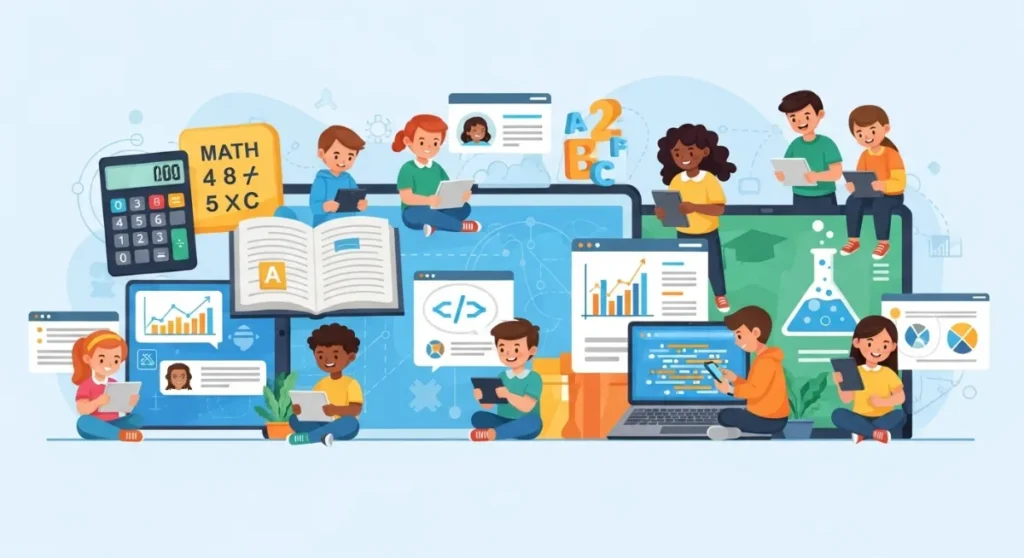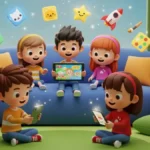Education technology in 2025 continues its rapid transformation, especially for young learners. As parents increasingly look for smarter, safer, and more interactive digital tools, the demand for the best learning apps for kids has surged globally. From AI-powered reading tools to gamified math platforms, the landscape of children’s education has become more innovative than ever.
In this detailed report, we explore the trends, tools, and top apps that are shaping smarter learning for children—while ensuring safety, creativity, and inclusivity.
A Growing Trend: Digital Learning Takes Center Stage in 2025
According to recent EdTech analyses, over 78% of parents worldwide now rely on at least one learning app for their child’s daily education routine. The shift began during the pandemic years, but 2025 has brought more refined, AI-driven, child-focused experiences.
The three biggest reasons parents now prefer learning apps include:
- Personalized learning paths powered by AI
- Gamified lessons that keep kids focused
- Flexibility to learn anywhere, anytime
This upward trajectory emphasizes how vital the best learning apps for kids have become in early learning and skill building.
Top Features Parents Expect in 2025 Learning Apps
Through surveys and market insights, experts highlight what makes an educational app truly effective:
1. Safety & Parental Controls
Parents want secure platforms with strong privacy features and customizable learning time limits.
2. Interactive & Visual Learning
Colorful animations, quizzes, voice guides, and real-time feedback keep children engaged.
3. Skill-Based Modules
Apps now cover:
- Math
- Early reading
- Language learning
- Coding for kids
- Science experiments
- Creative thinking
4. Offline Learning Options
Due to unstable internet in many regions, offline mode has become a top requirement.
5. Progress Tracking
Parents prefer apps with dashboards showing growth in reading speed, vocabulary, numeracy, memory, and logic.
Top 5 Best Learning Apps for Kids in 2025
After evaluating usability, safety, learning quality, and customer reviews, here are the top picks:
1. Khan Academy Kids
Category: All-round learning
Best For: Ages 3–10
One of the most trusted free platforms worldwide, Khan Academy Kids blends reading, phonics, counting, logic puzzles, and storytelling activities with an easy, kid-friendly interface. The 2025 update adds AI-based personalized lessons.
Why It Stands Out
- No ads
- Free for all
- Excellent learning variety
2. ABCmouse
Category: Early learning curriculum
Best For: Ages 2–8
ABCmouse remains a favorite among parents in 2025 for its structured, school-like learning path and gamified progress chart. Kids learn reading, math, art, music, and basic science through interactive stories and animations.
Top Features
- Over 10,000 activities
- Real-time progress reports
- Printable worksheets
3. Duolingo Kids
Category: Language learning
Best For: Ages 4–12
Duolingo Kids helps young learners pick up new languages faster through fun characters, short quizzes, and conversational practice. In 2025, the app expanded its AI-voice reading assistant for clearer pronunciation support.
Why It’s a Top Choice
- Easy daily lessons
- Encourages habit building
- Safe, child-friendly experience
4. BYJU’S Disney Early Learn App
Category: Story-based learning
Best For: Ages 4–9
A hit in India and now expanding globally, this app blends math and English lessons with Disney animations, making learning fun and visually exciting. The 2025 edition includes AR-based flashcards.
Benefits
- Highly engaging
- Concept-based learning
- Top-quality visuals
5. ScratchJr
Category: Coding for kids
Best For: Ages 5–12
In 2025, coding has become a mainstream skill for children, and ScratchJr is one of the best beginner-friendly apps. Kids can create animations, stories, and simple games—learning logic and creativity along the way.
Highlights
- Develops problem-solving
- Encourages creativity
- Completely free
Why Parents Prefer Learning Apps Over Traditional Books in 2025
Experts point out several key reasons:
✔ Faster learning through visuals
Kids absorb information quicker with animations and audio guidance.
✔ Better focus through gamification
Reward points and badges increase discipline and learning habits.
✔ Convenient for busy parents
Short lessons (5–10 minutes) fit easily into schedules.
✔ Covers multiple subjects inside one app
No need to buy several workbooks or tutoring programs.
How to Choose the Best Learning Apps for Your Child
While the options are many, parents should consider:
- Age-appropriate design
- Ad-free environment
- Inclusive and diverse content
- Offline availability
- Clear child-safety policy
Parents are highly encouraged to try free trials before opting for paid plans.
2025 Expert Opinion: Will Learning Apps Replace Schools?
Education experts say learning apps support schooling—but never replace it.
Instead, they serve as powerful supplementary tools that help children practice at home, build creativity, and stay digitally literate.
Schools in 2025 now encourage hybrid learning methods using tablets, AI tools, and digital activities.
The Future of Kids’ Learning Apps: What Comes Next?
Here’s what experts predict for 2026 and beyond:
- AI tutors for personalized teaching
- Metaverse classrooms for interactive science
- More AR/VR-based learning at home
- Voice-based learning for early readers
- Global learning communities for kids
With innovation accelerating, the best learning apps for kids will continue shaping a smarter and more engaging educational environment.







